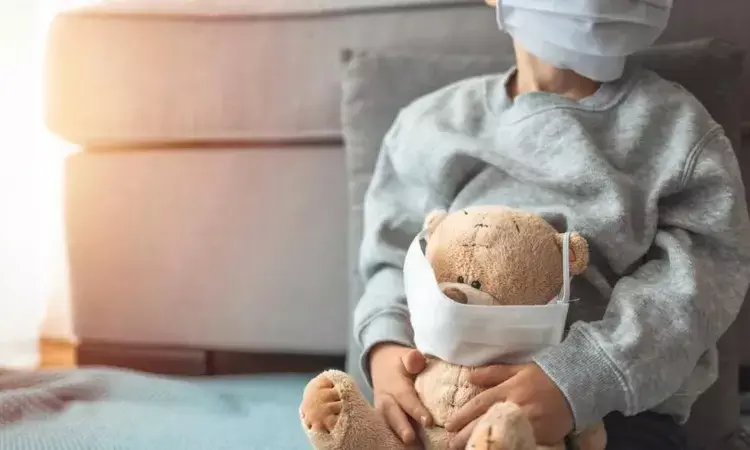- Home
- Medical news & Guidelines
- Anesthesiology
- Cardiology and CTVS
- Critical Care
- Dentistry
- Dermatology
- Diabetes and Endocrinology
- ENT
- Gastroenterology
- Medicine
- Nephrology
- Neurology
- Obstretics-Gynaecology
- Oncology
- Ophthalmology
- Orthopaedics
- Pediatrics-Neonatology
- Psychiatry
- Pulmonology
- Radiology
- Surgery
- Urology
- Laboratory Medicine
- Diet
- Nursing
- Paramedical
- Physiotherapy
- Health news
- Fact Check
- Bone Health Fact Check
- Brain Health Fact Check
- Cancer Related Fact Check
- Child Care Fact Check
- Dental and oral health fact check
- Diabetes and metabolic health fact check
- Diet and Nutrition Fact Check
- Eye and ENT Care Fact Check
- Fitness fact check
- Gut health fact check
- Heart health fact check
- Kidney health fact check
- Medical education fact check
- Men's health fact check
- Respiratory fact check
- Skin and hair care fact check
- Vaccine and Immunization fact check
- Women's health fact check
- AYUSH
- State News
- Andaman and Nicobar Islands
- Andhra Pradesh
- Arunachal Pradesh
- Assam
- Bihar
- Chandigarh
- Chattisgarh
- Dadra and Nagar Haveli
- Daman and Diu
- Delhi
- Goa
- Gujarat
- Haryana
- Himachal Pradesh
- Jammu & Kashmir
- Jharkhand
- Karnataka
- Kerala
- Ladakh
- Lakshadweep
- Madhya Pradesh
- Maharashtra
- Manipur
- Meghalaya
- Mizoram
- Nagaland
- Odisha
- Puducherry
- Punjab
- Rajasthan
- Sikkim
- Tamil Nadu
- Telangana
- Tripura
- Uttar Pradesh
- Uttrakhand
- West Bengal
- Medical Education
- Industry
High rates of kidney failure, clots seen in children and teens following COVID-19 infection: CDC

USA: A recent CDC report has described a wide range of symptoms and conditions that cropped up in children and adolescents in the year after a COVID-19 infection. However, no mental and breathing issues were seen in this group population.
The report, published in Morbidity and Mortality Weekly Report, stated that patients aged 0–17 years with previous COVID-19 had higher rates of acute pulmonary embolism (adjusted hazard ratio = 2.01), venous thromboembolic event (1.87), myocarditis and cardiomyopathy (1.99), type 1 diabetes (1.23), and acute and unspecified renal failure (1.32) compared to their counterparts without previous COVID-19.
Lyudmyla Kompaniyets, CDC COVID-19 Emergency Response Team; 2GAP Solutions Inc, Herndon, Virginia, and colleagues conducted the study using large medical claims databases in order to assess nine potential post-COVID signs and symptoms and 15 potential post-COVID conditions among children and adolescents.
Data collection was done on 781,419 U.S. children and adolescents with COVID-19. They were matched 1:3 with peers with a healthcare encounter but no reported COVID-19 from March 2021 to January 2022. They were followed for a minimum of 60 days and a maximum of 365 days. The mean age of the cohort was 12 years and was evenly split between boys and girls.
Following are the key findings of the study:
· The researchers found an increased incidence rates of several symptoms and conditions during the 31–365 days after a diagnosis of COVID-19 among children and adolescents aged 0–17 years.
· The highest aHRs were associated with potentially serious conditions, such as acute pulmonary embolism, myocarditis and cardiomyopathy, venous thromboembolic event, acute and unspecified renal failure, and type 1 diabetes. These conditions with the highest aHRs were rare or uncommon among children and adolescents in this analysis.
· Some of the study's findings are consistent with previous evidence of elevated risk for new onset of diabetes (5), myocarditis (6), and certain symptoms (4), whereas other conditions (acute pulmonary embolism, venous thromboembolic event, acute renal failure, coagulation and hemorrhagic disorders, and cardiac dysrhythmias) have not been previously reported as post-COVID conditions among children and adolescents.
· Several symptoms and conditions (respiratory signs and symptoms, mental health symptoms and conditions, neurological conditions, muscle disorders, and sleeping disorders) were less likely to occur among patients with COVID-19 than among patients without COVID-19.
· Respiratory signs and symptoms were less likely to occur among patients with COVID-19 than among those without in the main cohort. The opposite result was found in a subset of children aged 2–4 years and in a cohort of children and adolescents with no previous symptoms or conditions of interest; new respiratory signs and symptoms were more likely to occur among children and adolescents who had COVID-19, compared with those without a history of COVID-19.
The researchers conclde, "COVID-19 prevention strategies, including vaccination for all eligible persons aged ≥6 months, are critical to preventing SARS-CoV-2 infection and subsequent illness, and reducing the public health impact of post-COVID symptoms and conditions among persons aged 0–17 years."
Reference:
Kompaniyets L, Bull-Otterson L, Boehmer TK, et al. Post–COVID-19 Symptoms and Conditions Among Children and Adolescents — United States, March 1, 2020–January 31, 2022. MMWR Morb Mortal Wkly Rep 2022;71:993–999. DOI: http://dx.doi.org/10.15585/mmwr.mm7131a3.
Dr Kamal Kant Kohli-MBBS, DTCD- a chest specialist with more than 30 years of practice and a flair for writing clinical articles, Dr Kamal Kant Kohli joined Medical Dialogues as a Chief Editor of Medical News. Besides writing articles, as an editor, he proofreads and verifies all the medical content published on Medical Dialogues including those coming from journals, studies,medical conferences,guidelines etc. Email: drkohli@medicaldialogues.in. Contact no. 011-43720751


